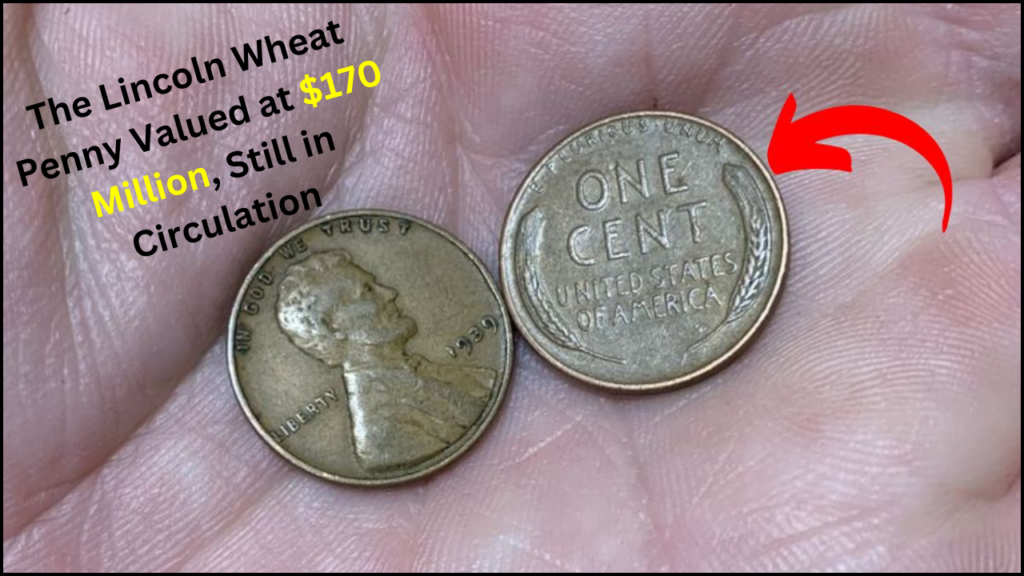
The Lincoln Wheat Penny, introduced in 1909, is one of the most recognized and celebrated coins in American history. Designed to commemorate the 100th anniversary of President Abraham Lincoln’s birth, the coin remains a symbol of American culture and numismatic heritage. While most Lincoln Wheat Pennies hold modest monetary value, certain rare variations, such as the 1943 copper penny, have garnered attention for their astronomical worth—some valued as high as $170 million. This article offers a detailed exploration of the Lincoln Wheat Penny, its history, variants, and its unique place in the collector’s world.
A Historical Look at the Lincoln Wheat Penny
Introduced in 1909, the Lincoln Wheat Penny marked a significant departure from traditional coinage design. It was the first U.S. coin to feature a historical figure instead of allegorical representation. The coin was designed by Victor David Brenner, and its obverse displayed a portrait of President Abraham Lincoln, symbolizing his role in shaping American ideals.
The reverse side of the coin carried a pair of wheat stalks flanking the words “ONE CENT,” reflecting the agricultural roots of the United States. This design remained in circulation until 1958, when it was replaced by the Lincoln Memorial Penny. Despite its common use, several key varieties and production errors have elevated the status of certain coins, making them prized possessions for collectors.
The Legendary 1943 Copper Penny
What Makes It Unique?
The 1943 Lincoln Wheat Penny is known for a production error that occurred during World War II. In response to a critical copper shortage, the U.S. Mint switched the material for pennies to zinc-coated steel in 1943. However, a small number of leftover copper planchets from 1942 were mistakenly used to mint a limited batch of pennies.
As a result, these copper pennies became extremely rare. It is estimated that fewer than 20 of these coins exist today, and each is considered a numismatic masterpiece due to its rarity, historical context, and condition.
Value and Collectibility
One of the 1943 copper pennies has been valued at an astounding $170 million. The exceptional worth of this coin arises from a combination of factors: its extreme scarcity, immaculate condition, and its status as a historical artifact from a turbulent era.
| Factors Adding to the Value of 1943 Copper Pennies | Details |
|---|---|
| Rarity | Less than 20 known examples exist. |
| Historical Importance | Reflects WWII-era manufacturing adjustments. |
| Material Anomaly | Mint error during copper shortage. |
| Collector Demand | Sought after by numismatists and investors globally. |
The Lincoln Wheat Penny, A Rare Coin Worth $20 Million That Remains in Circulation
A $51 Million Lincoln Wheat Penny, The Rare Treasure Still Circulating
The Lincoln Wheat Penny, A $1.5 Billion Treasure Still in Circulation
The Lincoln Wheat Penny Valued at $540 Million, A Detailed Guide to Rare Coins
The 1943 Steel Penny, A Rare Error Coin Worth Thousands
Other Notable Lincoln Wheat Penny Variations
The 1943 copper penny is not the only standout among Lincoln Wheat Pennies. Here are a few others prized for their rarity and historical value:
- 1909-S VDB Penny: The initials of the designer, Victor David Brenner (VDB), were included on early mintages but removed after public disapproval. Only 484,000 of these coins were minted, making them highly sought after.
- 1955 Double Die Penny: This variety features doubled inscriptions and dates, caused by a misaligned die. Clear specimens of this error fetch thousands of dollars.
- 1922 No-D Penny: Minted without the traditional “D” mark for Denver, this penny holds significant value due to its rarity.
How to Identify Valuable Lincoln Wheat Pennies?
While it’s rare to stumble upon a valuable Lincoln Wheat Penny in circulation, knowing how to identify them can help.
- Inspect the Color: A reddish-brown hue may indicate a copper composition, particularly for the 1943 penny.
- Perform a Magnet Test: A copper penny will not be attracted to a magnet, unlike its steel counterpart.
- Check the Year and Mint Mark: Key dates like 1909-S VDB, 1943 copper, and 1955 double die are among the rarest.
- Assess Condition: Coins in better condition are more valuable. Use tools like magnifying glasses and reference guides to confirm their state.
The Cultural and Historical Significance
The Lincoln Wheat Penny isn’t just a financial asset for collectors; it serves as a tangible link to America’s past. It reflects pivotal moments in history, such as the 1909 celebration of Lincoln’s centennial and adjustments during WWII. Beyond monetary worth, these coins carry the stories of their time, resonating with collectors and history enthusiasts alike.
FAQs
1. Why is the 1943 copper penny so valuable?
Ans: The 1943 copper penny’s value stems from its rarity, historical significance during World War II, and the collector’s demand for error coins. Its valuation also depends on its pristine condition, with only a handful of specimens ever discovered.
2. How can I confirm if I own a 1943 copper penny?
Ans: You can confirm its authenticity by checking its color (reddish-brown), testing with a magnet (copper is non-magnetic), and examining the date and mint details. To ensure accuracy, have it appraised by a reputable numismatist.
3. Are other Lincoln Wheat Pennies valuable?
Ans: Yes, other Lincoln Wheat Pennies like the 1909-S VDB and 1955 Double Die pennies are also highly sought after. Their value depends on factors like rarity, condition, and historical significance.
Conclusion
The Lincoln Wheat Penny stands as a bridge between history and currency. Variations like the 1943 copper penny show how even minor production errors can transform a common coin into a priceless artifact. While the odds of finding such a treasure are slim, these coins remind us of the unexpected wealth of stories hidden in ordinary objects. Whether for their historical connections, artistic design, or investment value, Lincoln Wheat Pennies continue to captivate the hearts of collectors worldwide.